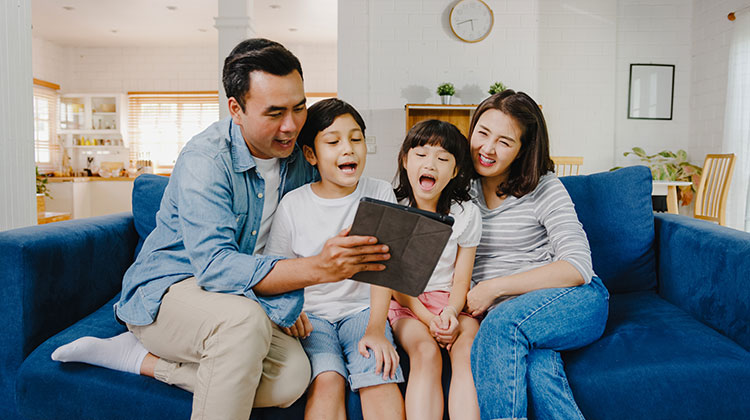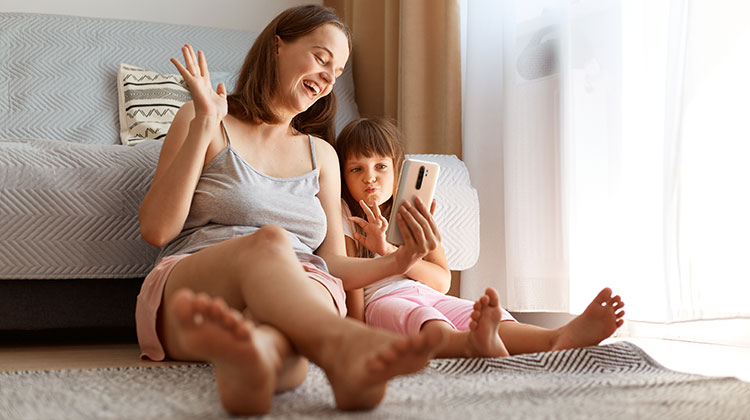“What is Sharenting? Why do parents feel the need to share content about their children? Why is it dangerous for children?” We’ve written the answers to all these questions for you.
The concept of sharenting is formed by combining the words “share” and “parenting”. This concept describes parents who share their children’s photos, videos or private information on social media. While active social media usage rates are increasing, it has become inevitable to come across more and more children’s content in parent profiles. Of course, it is useful to understand the needs of parents to make these shares. However, it is not possible to consider the effects of sharenting on the child’s physical, emotional and sexual health.
Studies show that mothers use more sharenting than fathers. An old African proverb says; “It takes a village to raise a child”. In other words, it is emphasized that the parents, especially the mother, are supported by other important people in the process of raising a child. This support can be a physical support, such as a cooked meal, to increase the milk supply of a mother who has just given birth, or it can also be an emotional support such as being seen, approved and appreciated for her motherhood.
How would you interpret the proverb as follows for parents, who now add digital support to these types of support and share their parenting processes transparently with their followers on social media; “It takes many followers to raise a child”. Like many things in the new world, the need for support seems to be digitized.

Parents often share their children’s content on their social media accounts to gain social support, alleviate feelings of loneliness, gain social approval and be liked. At the same time, the child is the representative of his parents in the world. As a narcissist, parents can gather satisfaction, admiration and sympathy from their children.
The meaning of these posts for the parents is in the foreground rather than the meaning of “for the child”. It’s good for the parent, but what about the child? For example, images that the child may feel “embarrassing” and perhaps would not want to share when his/her consent is valid (the moments in the potty while he is getting into the toilet habit, morning moods in the bed he just woke up from, the baby’s vomit on his mother’s clothes, the moment of birth, etc.) can reach.
This situation brings with it many dangers. These dangers are not considered when sharing, because social media is an environment where impulses are very dominant. You wanted to like, like immediately, you got angry and unfollow immediately. It is like a center for instant decision making. It should also be emphasized that when it comes to children, it is necessary to think about it a lot and carefully.
“When my child watches this photo/video in the future, would he/she be more satisfied because it was shared or because it was hidden in a private way?” It is useful to keep questions such as this one.
The child’s safety is at stake. The child, whose content is shared publicly, is positioned very vulnerable in the outside world. The child is at risk enough to go to sexual abuse. On the one hand, parents give their children privacy or private area education to protect themselves from all kinds of dangers, on the other hand, they forget the existence of pedophiles in the world we live in and share.
It should not be forgotten that pedophilia involves an adult not only touching the child, but also watching the child’s visuals. The city where the children live, the school they attend, their home address or the name of the course they attend can be learned easily. And all of these can be found in the video titled “We are entering school on Thursday morning” shared by parents who, unfortunately, value their children as much as the world, or in the photo titled “Bath ritual, new robe” taken at home before sleep.
The fact that these contents are recorded in the digital environment forever is to protect children against adults who have the potential to harm them (pedophilia, making them look like another family’s child by using the child’s photos, digital kidnapping, identity frauds, etc.), as well as keeping this information in the future. Eliminating the threat of being left in a vulnerable position is crucial.

The emotional world of the child is in danger. I wonder how children might be feeling when suddenly the parent starts to videotape themselves or when the phone’s camera suddenly intervenes while sharing a good moment? Sharenting, why doesn’t it work so well with teenagers? The adolescent, who tries to recognize and introduce his/her existence in this world with the internal and external boundaries he/she tries to create, is different from a child who has not reached the maturity to complete his/her studies on borders and is still dependent on his parents.
That is, the adolescent shows his teeth, while the child bows. Children’s voices are often not heard, either. Even those moments of opposition are shared: “Look how angry Scottie will be now, he doesn’t like this video incident at all!” However, borders are everything. As the child gets older, he/she is a different individual from his/her parent, that he/she can share the things that make him/her happy as well as the things that bother him/her, that his/her emotional boundaries are respected (for example, by not insisting that he/she immediately tell what happened when he/she is sad or wants some alone time), he/she needs to know that she is respected (for example, if she doesn’t like hugs, don’t force it).
In this way, he can position his self in a valuable place. He can learn to respect the boundaries of others in the same way. When attempted to be violated, it can claim its own boundaries. In addition to all these, there are cases where parents share their children’s content on social media in order to make a profit. Profit comes in both material and spiritual dimensions. In whose interest is it really to increase the number of followers by taking advantage of the sweetness, talents and characteristics of the child, and thus to gain more financial gain?
In fact, a serious crime is committed here, since the child’s being dragged into a position that supports gaining money or followers makes him/her a “child worker”. For the child, things become much more complicated and their sense of trust is seriously damaged when the belief that their existence will be respected and loved unconditionally, even if it does not provide any gain. Social media is full of illusions as it represents the “best version” of everyone and everything. Everyone is very happy, everything is very easy, everywhere is immediately accessible… While the child is a part of this fantastic and idealized world, it must be so challenging to face reality.
In reality, a child who may be upset and angry may gradually lose contact with his/her true self based on social media experiences (for example, the child realizes that positive memories, achievements, smiling faces are always recorded by their parents). This situation may be the trigger of many psychological and psychiatric problems.
What needs to be done?

When it comes to children, it is very important to approach sensitively before sharing. In order to increase the selectivity in the shares, “Is there any possibility of leaving my child unprotected while sharing this photo/video? Who is this sharing for? When my child watches this photo/video in the future, would he/she be more satisfied because it was shared or because it was hidden in a private way?” It is useful to keep such questions in mind.
If the child’s content is to be shared, sharing from a closed and secure account is the first precaution that can be taken. Depending on their age, getting approval from the child before sharing will make them feel that their boundaries are valuable. If the account is public, care can be taken to post in a way that will not fully disclose the child (such as his back, his face is not visible, etc.).
related post
related store
TBD

Leave a Reply